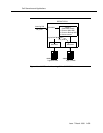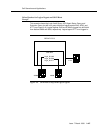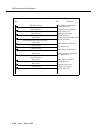
Call Scenarios and Applications
Issue 7 March 1998
A-47
4. Converse Vector Command
Interactions
External Call to a VDN that has a Converse Step
that is Interrupted
This scenario presents the call flow for an incoming ISDN PRI call for VDN 7000
that has a Converse vector command that can be interrupted (see Figure A-10).
The call comes into the VDN and gets queued to two splits, Split 6500 and Split
3400. The converse vector command then sends the call to the VRU (Split 1234)
while maintaining the call’s position in the other queues. When an agent in
Split 6500 becomes available, the call leaves the VRU and is delivered to the
agent. This “transfer” happens regardless of whether or not the caller has
completed the VRU interaction.
Note that the Alerting Event Report sent when the call alerts the VRU port
contains a cause value — CS3/23 (call remains in queue). This cause value
informs the application that this is a converse split and that the call will not lose its
place in any other splits that it has been queued to.
VDN 7000 has Event Notification active and each port on the VRU has Domain
Control active.
Figure A-10. Call Flow for a Converse Step that can be Interrupted
Agent
Extension
DEFINITY ECS
Vector Q
1. Queue to Main
Split 6500
2. Queue to Main
Split 3400
3. Converse on
Split 1234
ACD
Split
6500
ACD
Split
3400
ACD
Split
1234
VDN 7000
Port
5431
VRU
Incoming Call
call_id=50
x6534


















